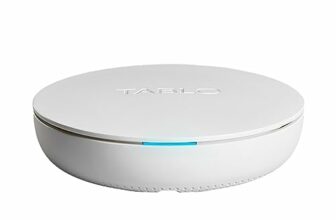Technically Well is supported by our readers. When you purchase an item through links on our site, we may earn an affiliate commission. Read more in our disclosures.
You hate to see it: you’re working on an important document, and all of a sudden, the screen goes black and you have no idea why. Or, maybe you’re trying to put the finishing touches on that cloud-based video editing project, and right when you needed it least, the Wi-Fi cuts out and you lose your connection. These kinds of common computer problems can wreak havoc on a normally productive day, and it often seems that there’s just no way to prevent them. Fret no longer. These 5 tips will help you get out of the nastiest computer glitches in a breeze.

1) Turn it off and turn it back on again
This is the most sacred and trustworthy tech fix. Is your computer bugging out and crashing a lot? Are you losing your Wi-Fi connection even though your phone says the signal is just fine? Does it seem like it’s taking 45 minutes just to open a folder and create a new document?
If that sounds like your computer, most likely, you can solve a lot of that simply by shutting the thing off, waiting a few minutes (maybe go grab a quick snack in the meantime) and then returning to your workstation and turning it back on again. While this isn’t a fix for everything that goes wrong with your tech, some people estimate as many as 80% of tech problems can be quickly and simply solved by the old turn it off turn it on again method.
2) Install Your Updates
Failing to install new updates can bring easily summon an unholy host of computer problems to your doorstep. From a laptop flickering screen to an unmounted hard drive, glitching applications to slower performance, the number two most common cause for unwanted computer nastiness is simply that the user forgot to install updates (number one being that you need to restart your machine).
The next time you’re facing computational woes, smash that Start button and check to see whether there are any pending updates that need to be installed. If you do see any, install them, then restart your computer. Chances are that after this your computer will be running like a dream, no questions asked.

3) Check for malware
If you’ve been deep-diving on the internet, scrolling through some perhaps less-than-reputable sites for unsavory content, there’s a high likelihood that your computer has caught a bug. While antivirus software can protect against some of the most common computer ailments, the simple truth is that there’s no better cure than prevention.
There are some easy steps you can take to stop your computer from contracting a virus: don’t download strange parcels from the internet, never click on flashy banner ads that seem too good to be true, and never give your information to strangers on the internet. By following these steps, you make it much less likely that you’ll get a computer virus.
4) Adjust Your Settings
Does your display look a little wacky? Maybe the icons are too big, or webpages look out of scale. Alternatively, it could be that your sound is too loud or too quiet, or maybe the mouse is moving all catawampus whenever you try to move it across the screen.
While in some cases this may signal a genuine issue with your computer, in all likelihood, the problem is simply that your settings changed. Sometimes, on an update, the default settings may be restored, and some applications can even change settings inadvertently while they are running. Don’t panic. Simply enter the settings on your computer and readjust them to where things are most comfortable.

5) Replace the Battery
While occasionally an internal hardware issue will cause your computer to go kaput, it’s also very likely that you’re simply having a battery issue. If you’re encountering a black screen on your laptop glaring menacingly at you as you try to get your work done, first, try to remove the battery and reinstall it.
Then, charge the laptop normally. If you find that this isn’t working, see if you or a friend has a spare battery that you can use to try to at least diagnose the problem. If that works, it is probably time to purchase a new battery for your laptop. This is much cheaper than replacing the whole thing, so don’t sweat it too much.
Those are our tips for quick and simple laptop repairs. Got any other surefire tech fixes that always work for your gear? Let us know in the replies below!






